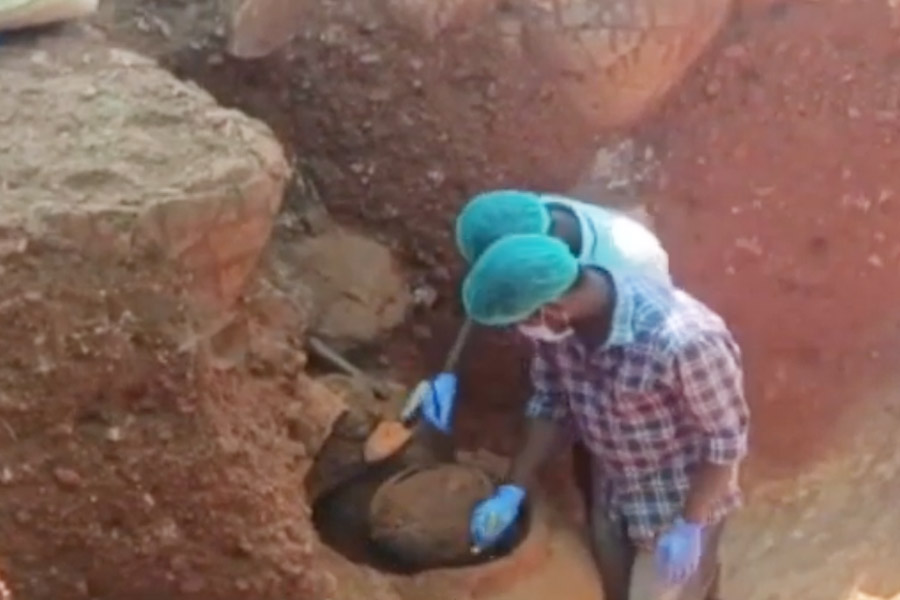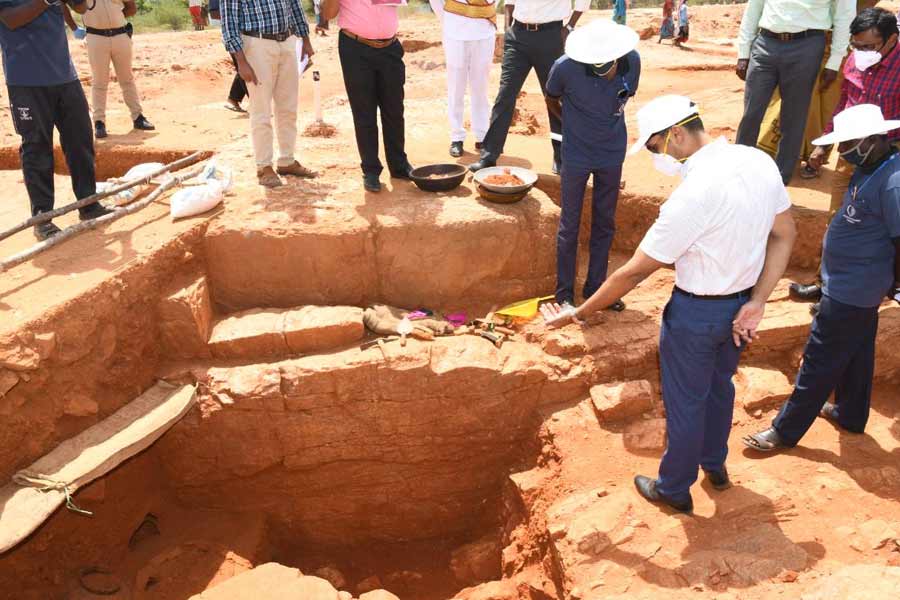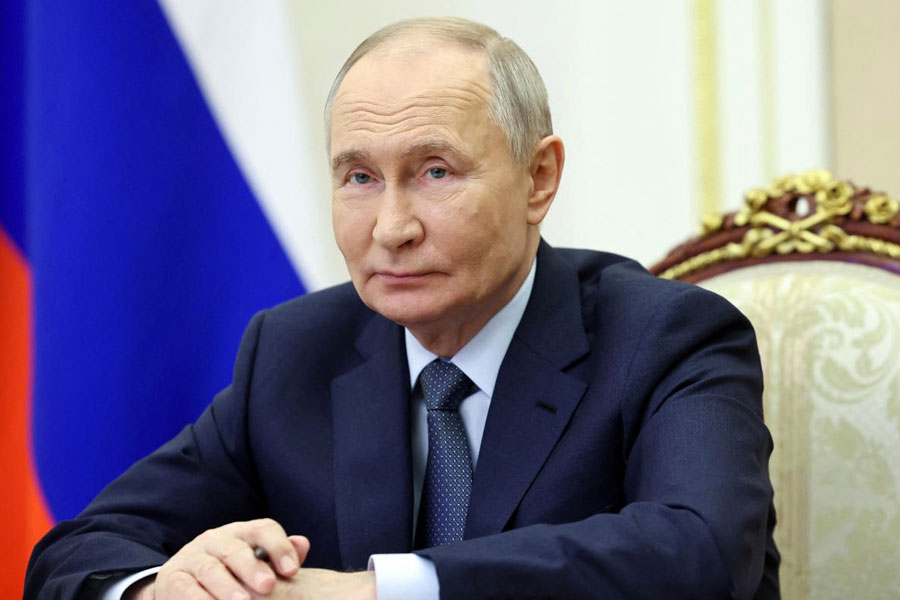The Iron Age began in what is modern-day Tamil Nadu, the state’s chief minister M.K. Stalin said on Thursday, citing findings that if validated and upheld could mean rewriting the history of human evolution.
“Based on results from world-renowned institutions, the use of iron in Tamil Nadu dates back to the beginning of 4th millennium B.C.E., establishing that iron usage was prominent in South India over 5,300 years ago,” Stalin wrote on hix X (formerly called Twitter) handle.

Sivagalai excavation/ Screengrab
Till now, it is believed that the Iron Age began in the Middle East and South-eastern Europe around 1,200 BCE – that is roughly 3,200 years ago.
“What was written in our ancient literature is now becoming scientifically proven history, thanks to the meticulous efforts of our Dravidian Model government. The history of the Indian subcontinent can no longer overlook Tamil Nadu. In fact it must begin from here,” Stalin wrote.
Five of the samples or urns collected from the Sivagalai burial site in Tamil Nadu’s Tuticorin district in 2019 were sent to the Birbal Sahni Institute of Palaeosciences in Lucknow and two samples were sent to the Physical Research Laboratory in Ahmedabad.
A total of 28 other samples were sent to the firm Beta Analytic Inc in Miami, US, which carbon-dated the samples.
Using the luminescence dating method for two of the samples sent to the Ahmedabad based lab, the results showed these were from 4,400 (+/- 400 years) and 4,500 (+/-300) years ago.
The oldest among the five samples sent to Lucknow is from 4,500 (+/-400) years ago and the newest is around 3,300 (+/-600) years old.
In a letter to Ramalingam Sivanantham of Tamil Nadu’s department of archaeology, Beta Analytic’s vice president of laboratory operations Robert Patrick wrote: “… Conventional Radiocarbon Ages, and sigmas are rounded to the nearest 10 years per the convention of the 1977 International Radiocarbon Conference. When counting statistics produce sigmas lower than +/- 30 years, a +/-30 BP (Before Present) is cited for the result unless otherwise requested.”
In some of the samples, the Miami-based lab used an isotope ratio mass spectrometer (IRMS).
According to the Encyclopedia Britannica, the date of the full Iron Age, in which this metal for the most part replaced bronze in implements and weapons, “varied geographically, beginning in the Middle East and South-eastern Europe about 1200 BCE but in China not until about 600 BCE. Although in the Middle East iron had limited use as a scarce and precious metal as early as 3000 BCE, there is no indication that people at that time recognized its superior qualities over those of bronze. Between 1200 and 1000, however, the export of knowledge of iron metallurgy and of iron objects was rapid and widespread. With the large-scale production of iron implements came new patterns of more permanent settlement. On the other hand, utilization of iron for weapons put arms in the hands of the masses for the first time and set off a series of large-scale movements of peoples that did not end for 2,000 years and that changed the face of Europe and Asia.”
The Tamil Nadu department of Archaeology had started excavation nearly five years ago, after a history teacher in a local school had unearthed some artefacts in a mound spread over 2,000 acres.
Excavations have been carried out in phases at the Sivagalai Parambu and Srimoolakaraiare (both burial sites) and Barakiramapandiyapuram and Pottalkai Thiradu (habitation areas) and over 700 artefacts including terracotta spindle whorls, terracotta smoking pipes, sharpened tools, hopscotches, bangles of glass, shells and terracotta were found. In 2022, a gold ornament was discovered at the Barakiramapandiyapuram village.
About the Sivagalai findings, leader of Opposition in the Lok Sabha Rahul Gandhi said: “India’s rich heritage continues to inspire the world. Recent archaeological findings in Tamil Nadu reveal the use of iron over 5,300 years ago, showcasing India’s early advancements in the Iron Age. Tamil Nadu’s contributions, along with countless milestones across our nation, reflect India’s innovation and unity. Let us celebrate the spirit of India that thrives in every state, community, and voice.”











